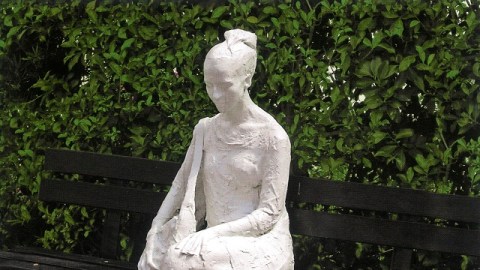Picturing 9/11: How Art Changed After September 11th

It seemed to me as if politicians began using the phrase “pre-9/11 thinking” too soon after the day itself. Even a decade later, Dick Cheney in his recent memoir condemns the “pre-9/11 mind-set” of Brent Scowcroft, a national security advisor in the first Bush Administration who advised against invading Iraq. September 11th remains a cognitive turning point for many—a day when your picture of the world literally changed. The exhibition September 11, which runs at MoMA PS1 through January 9, 2012, similarly asks if there are such things as “pre-9/11” and “post-9/11” seeing by gathering together artwork not directly related to the attacks but close enough in some way to make viewers wonder if they perceive the world, and the art in it, differently after the attacks and all that followed. In looking at art that hasn’t changed from before September 11th, we can visualize just how much we have changed since that day and, perhaps, if we should, or even can, ever go back.
On the very morning of the attacks, when New Yorkers only had to look to the blackened skies to know something was wrong, Janet Cardiff’s The Forty Part Motet, which consists of 40 speakers circled throughout a gallery each broadcasting an individual member of a 40-person choir singing a 16th century choral piece, stood in one of the MoMA PS1’s galleries. What was once an interesting piece of contemporary art quickly took on a whole new resonance as the individual voices came to represent the voices of the victims just silenced. Evocative transformed into eerie in real time. The Forty Part Motet returns to that same gallery as part of September 11, but, as the curators hope, not to that pre-9/11 existence. Cardiff is just one of 41 artists represented by 70 works, most of which were created before the attacks. “Even though the towers are gone, we see literal and figurative echoes of them everywhere,” curator Peter Eleey explains, “whether in the silhouettes of two parallel trees in an Alex Katz landscape, or in the variety of ways that our culture has changed in response to the attacks that brought them down.” Whereas the shrines and memorials that arose from the ashes all around New York City served one purpose, Eleey believes, “[T]his exhibition will offer another way of thinking about what happened and reflecting on the event’s continued presence in our lives.”
Big names such as Ellsworth Kelly, Barbara Kruger, Diane Arbus, Christo, William Eggleston, and even Yoko Ono and John Lennon fill the exhibition with star power, yet always dimmed by the shadows of the towers themselves. One artist that seems ideal for this exhibition, however, is George Segal, whose 1998 sculpture, Woman on a Park Bench (shown above), epitomizes the aims of the show. Segal died a year before the attacks. His sculpture existed 3 years before “everything changed.” And yet both artist and art seem perfectly apt for the occasion. The woman in white seated on a bench could have been one of the survivors who fled the clouds of debris racing through the streets. We see her frozen in a moment of respite. Or she could be a modern version of one of those plaster casts from Pompeii capturing the last moments of a victim of Vesuvius. Almost as quickly as the residents of Pompeii found themselves trapped in a hopeless situation, those on the upper floors of the towers soon realized that help would never come. Segal’s Woman on a Park Bench could be one of those victims in the moment of resignation, taking the time to put her affairs in order. Looking at the sculpture today, these associations seem inevitable, as the curator hoped.
Of course, Segal’s work often contains an elegiac note. Segal’s dedicated his Holocaust Memorial in 1984 at the California Palace of the Legion of Honor in San Francisco with a plaque that reads, “In the memory of those martyrs and fighters, we pledge our lives to the creation of a world in which such evil and such apathy will not be tolerated.” For Segal, the battle was against not just those who kill the innocent, but also against those who stand by and let it happen. Perhaps the final lesson of the exhibition September 11 is to continue to fight the evil that led to those events ten years ago while remaining aware of the danger of apathy. We see everything now through the filter of September 11th, yet we can still lose sight of that changed reality. The before and after effect of September 11 reminds us of just how far we’ve come in 10 years, and just how far we still need to go.
[Image:George Segal. Woman on a Park Bench. 1998. Bronze sculpture with white patina, metal bench. 52 x 72 1/2 x 37 1/2”. Courtesy The George and Helen Segal Foundation and Carroll Janis. © 2011 The George and Helen Segal Foundation; licensed by VAGA, NY.]
[Many thanks to MoMA PS1 for providing me with the image above and other press materials for their exhibition September 11, which runs through January 9, 2012.]





